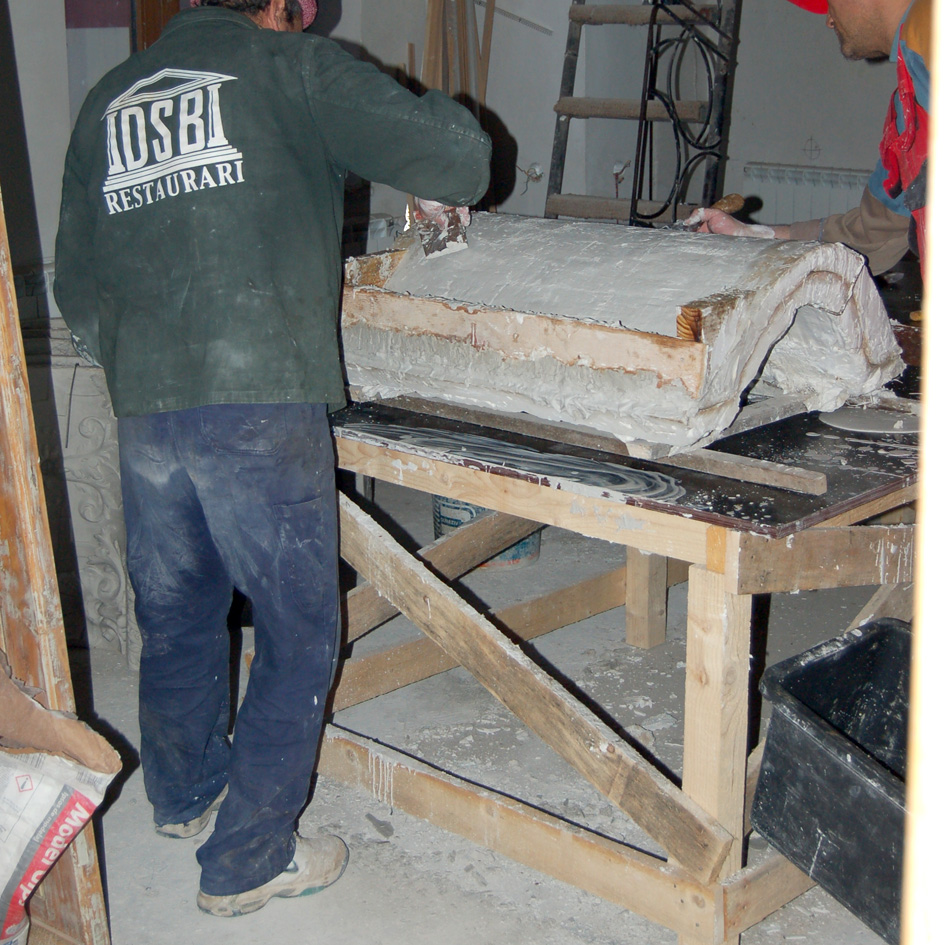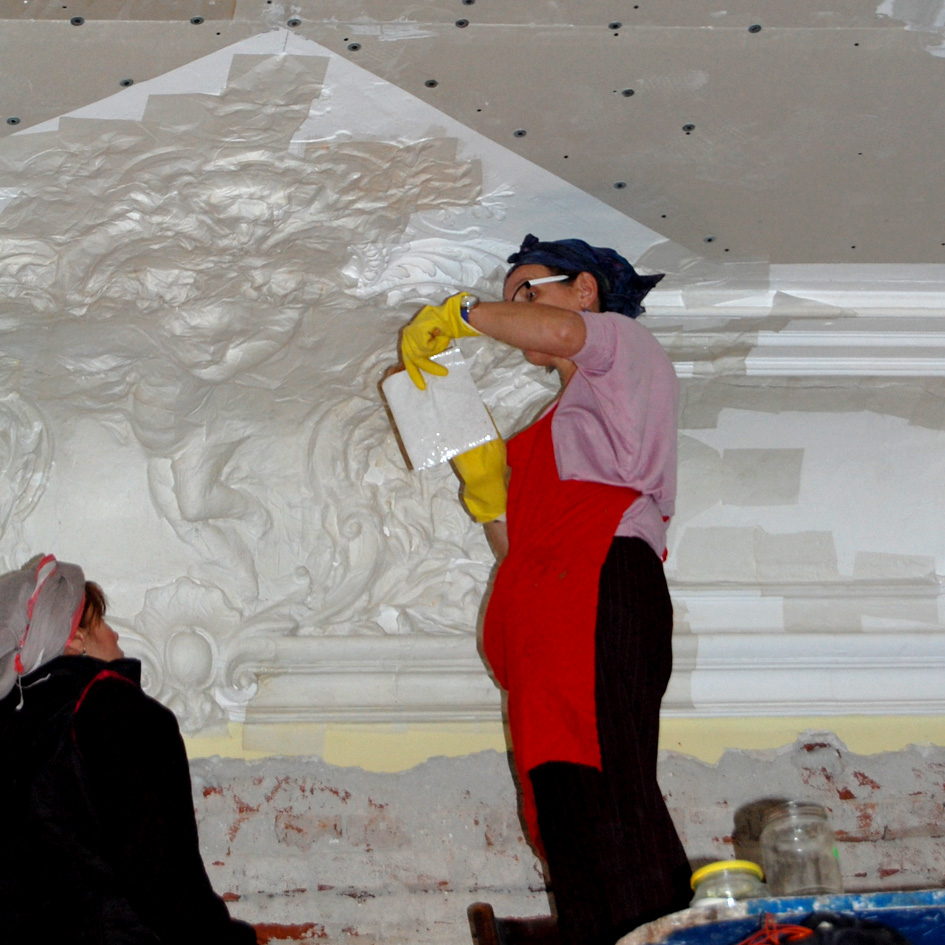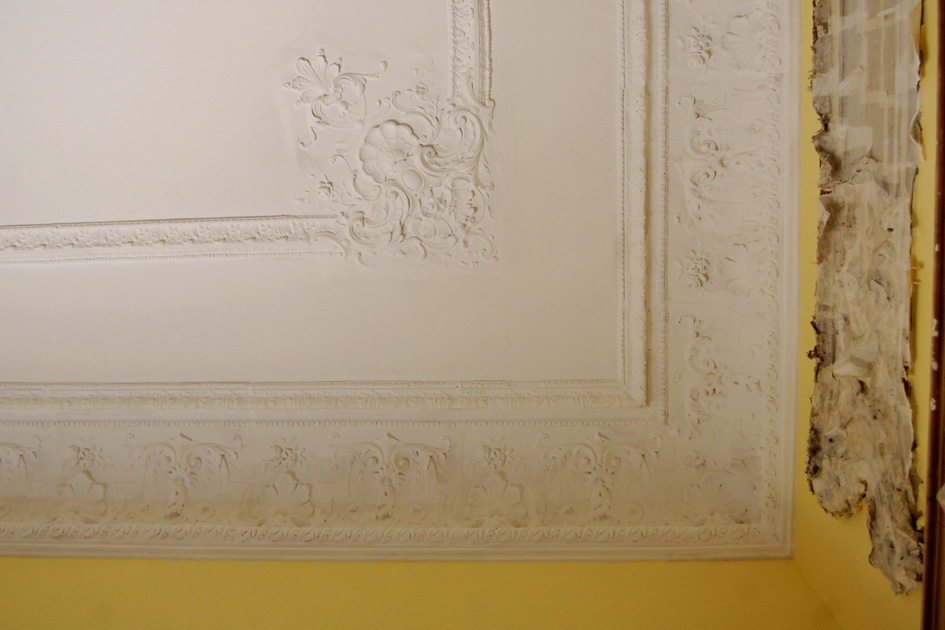Stucco restoration Aristomene Fotino house it would not have been possible without specialized craftsmen. Specialization in such a field of construction works (as in many cases of other specializations) is, unfortunately, not something systematically pursued by state policies.
As in the medieval period, the job is "stolen", people are specialized within the guild, learning on the construction site as apprentices of the craftsmen to the extent that there are the necessary opportunities. Many of the plasterers active today learned their trade around the megalomaniacal construction site of the People's House, for example.
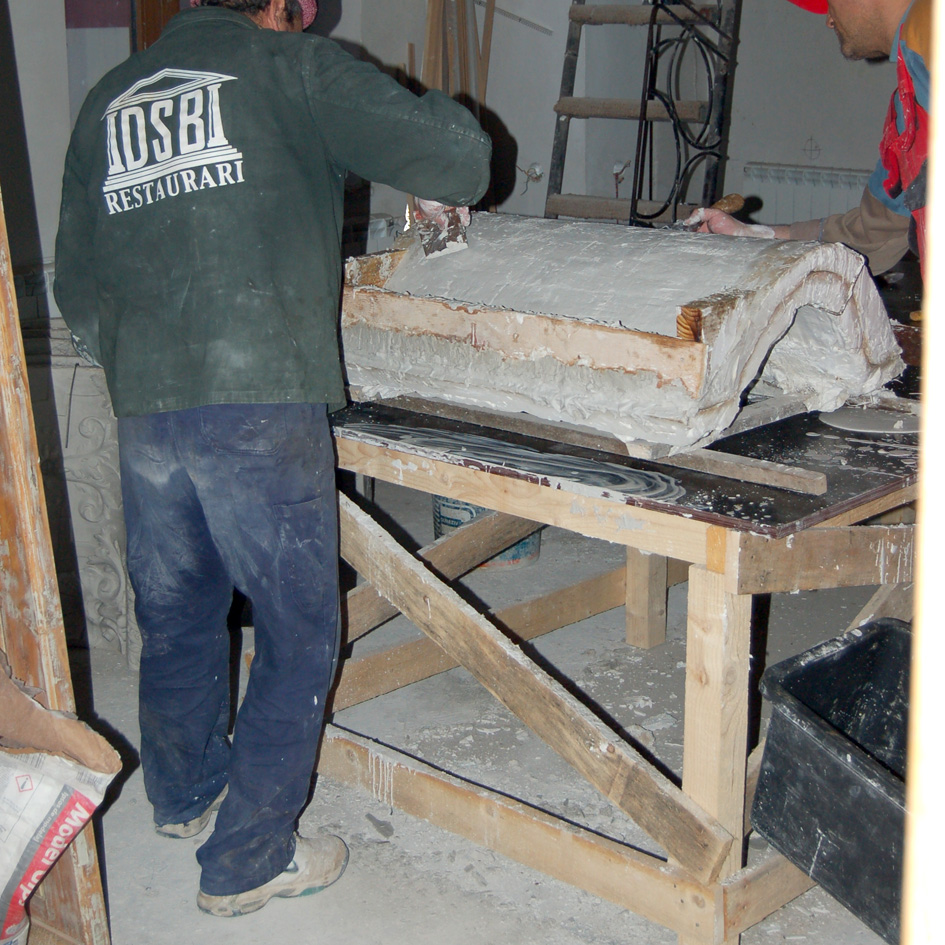
The boss of the team of plasterers (1) who restored or redid the stucco that was degraded at the time of the purchase of the house, an apprentice who became a master, he still remembers the production cycle and the way of working. He remembers how an old craftsman, who was still working around the venerable age of 80 and who was the one called to do the sales work during the restoration works at the casino in Sinaia.
With his work experience, he was the one who most quickly identified the anchoring points, the junction places of the parts so that he could strip and extract the parts as quickly and with damage cele mai mici. Craftsmen know that sometimes destructive interventions must be made, because without delicately executed pickling, in successive layers, one cannot learn about the evolution of the construction stages of a house and one cannot discover the original color palette.
He also remembered the teams of women specially qualified for the finishing operations that had to be done after the parts were extracted from the casting molds. He also remembered the fact that the production of those molds was only possible thanks to the special experience of the craftsman who knew how much water to add to the mixture and at what temperature. No recipe could replace this experience because a temperature that was too high or too low or an amount that was too high or insufficient in the mixture with the bone glue led to unsuitable consistencies so that the created form would not properly cover all the profiles that needed to be replicated.
He was an important character among plasterers Framer, the one who had to be able to transpose a drawing into a physical model to serve the production of molds. It is no wonder that they were associated with the workshops of the Plastic Fund combine. Restoration operations are, as the Charter of Venice says, something that requires a high degree of specialization, so it should not be surprising that two different teams worked on the restoration of the stucco in Caragiale 11, because in the first instance a skilled hand was needed to fixing and strengthening the parts kept in position and their careful protection during the other stages of structural strengthening (2 a,b,c).
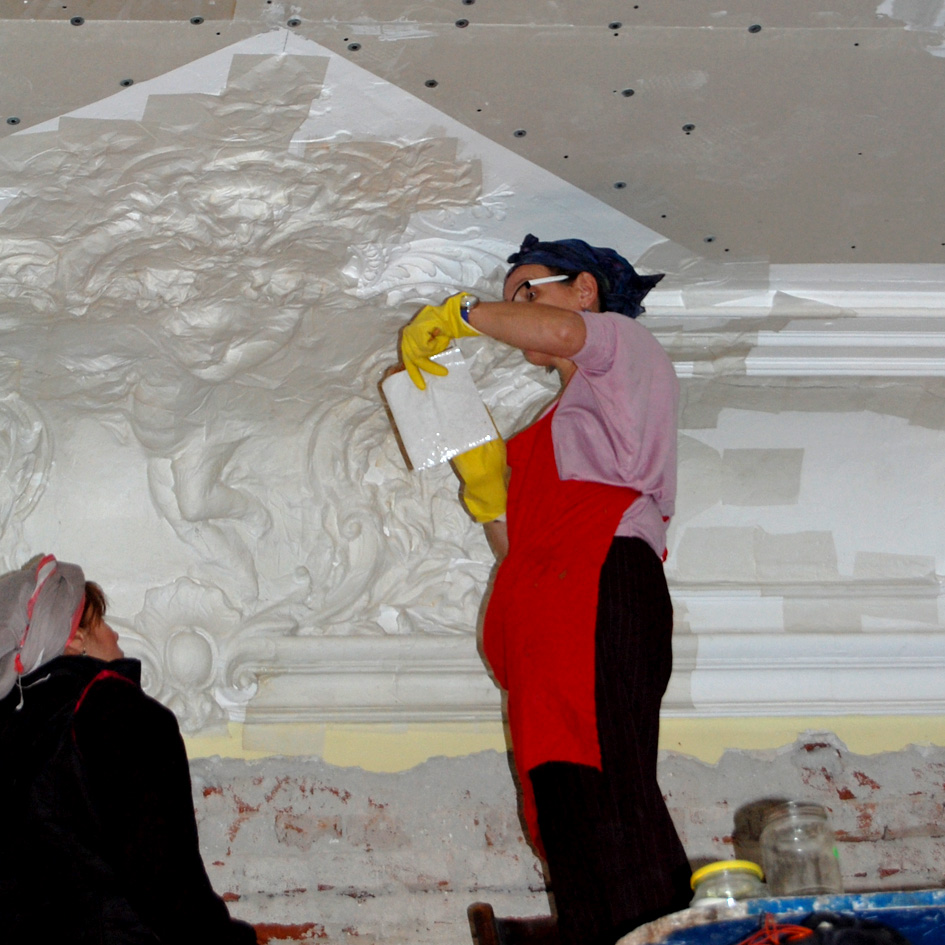
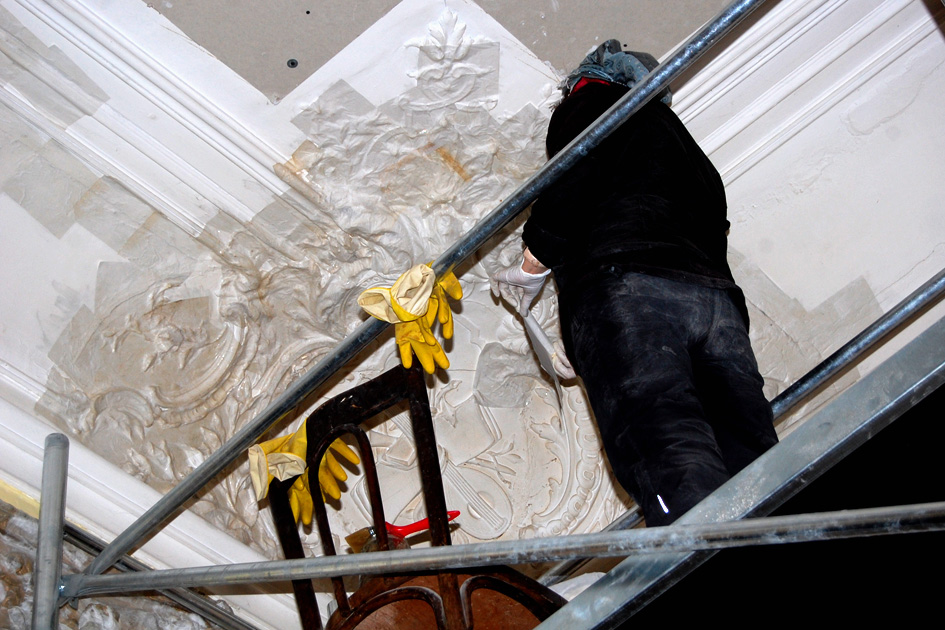
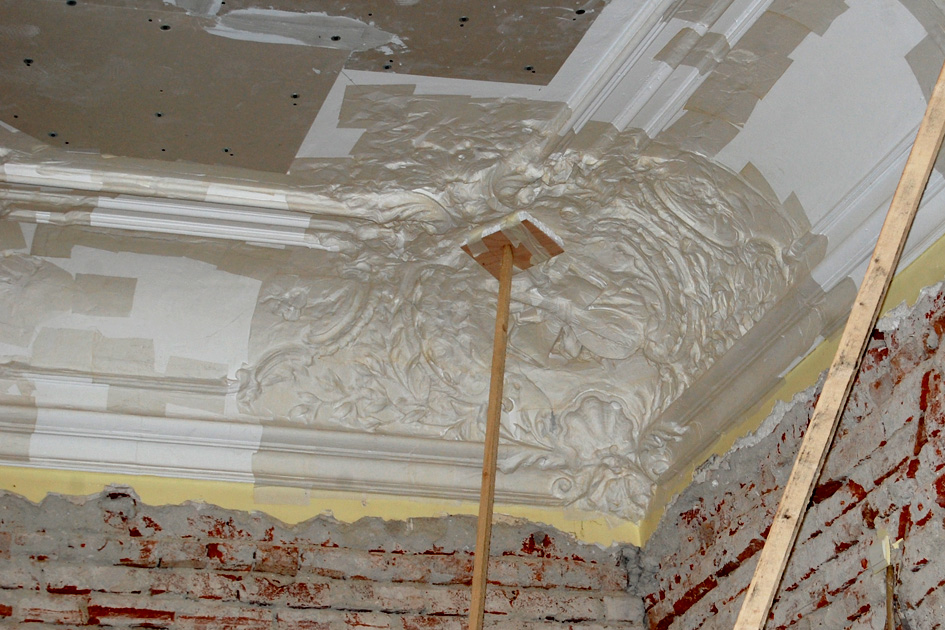
But the work of the second team gave the opportunity for a little documentation so that we could follow the stages of production of a cast piece needed for the interior cornice in the room that was to be set up as a conference room (3 a,b,c,d,e ).





The stages assume a good knowledge of material and technique. In addition to his professional memories, the head of the plastering team also notes that, unlike the effort to truly restore cultural heritage, today's surrogate materials can be bought and glued by any unskilled worker, at the cost of losing any notion of authenticity or authenticity. respect for cultural heritage. On the other hand, modern technology can be integrated during the restoration process, in support of the craftsmen. An example would be the use of the laser level that allows the exact fixing of the horizontal and vertical of the photo location, the device replacing the traditional level or level or the water hose and shortening the time for marking the guides (4 a,b,c).
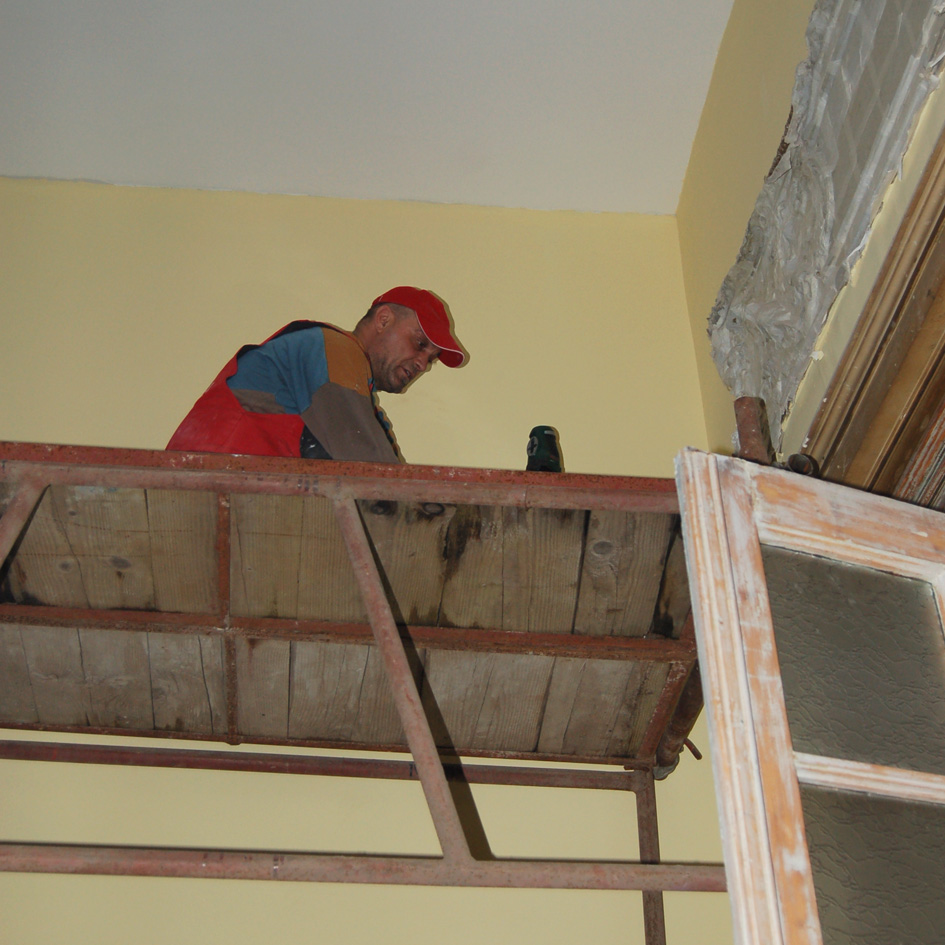
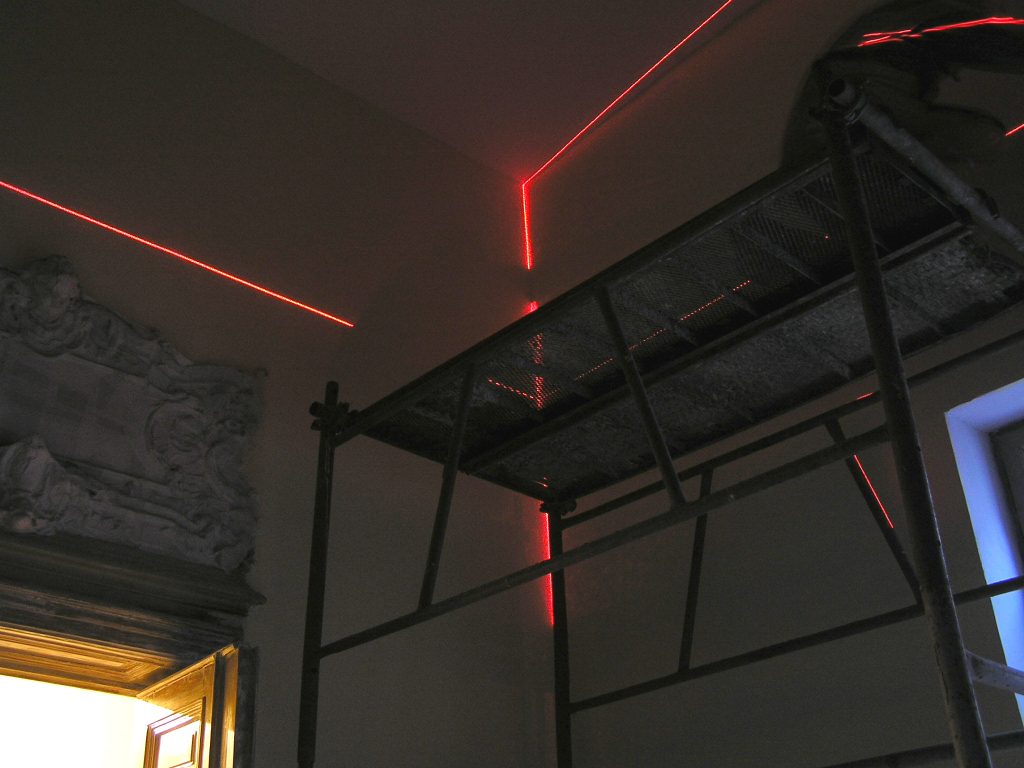
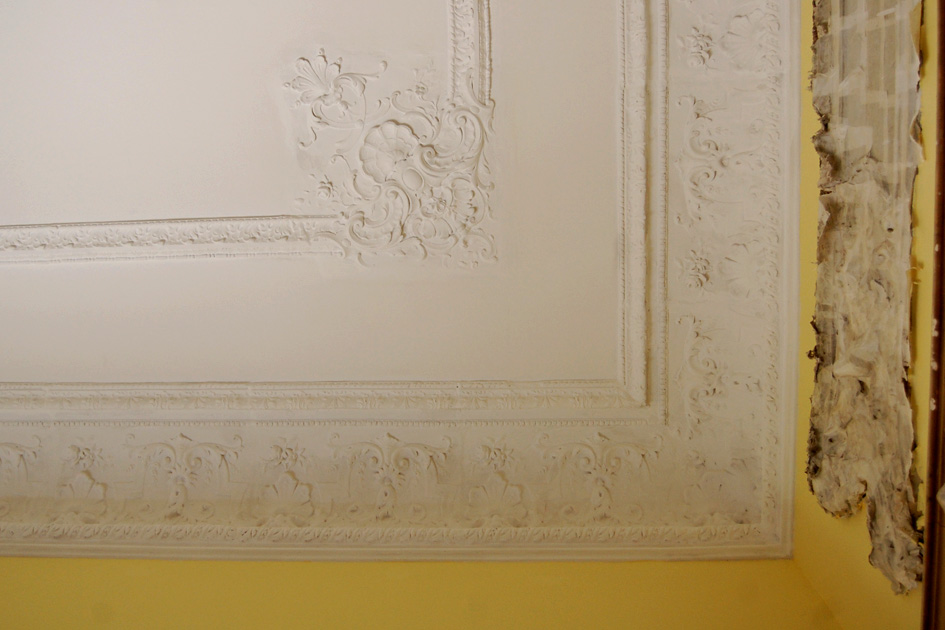
This is a way of showing how important restoration actions such as the one initiated by the Cantacuzino Foundation on Aristomene Fotino's house are, because any such restoration keeps active those restorers whose science and practice would surely be lost without such of investments.
Images
